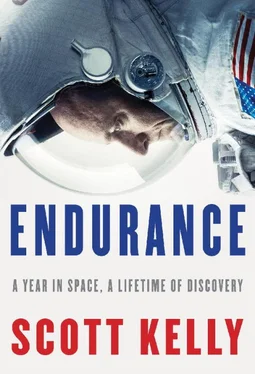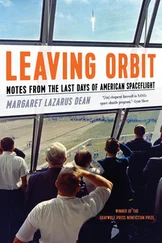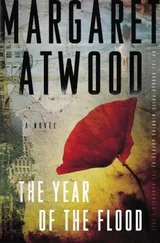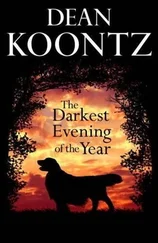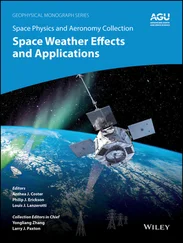—
A COUPLE OF weeks later, we are eating breakfast when a fire alarm sounds. Even though we have had many false alarms over the time I’ve been here, this is still a sound that captures our full attention. It takes us only a few minutes to trace the alarm to the European module, where a biology experiment with rotating incubators is showing a slightly elevated carbon monoxide level. We power down the experiment and confirm that there are no elevated readings anywhere else in the station. We sample the experiment to see if there are signs of combustion. There are. It’s a real fire.
I always find the alarms entertaining in a strange way, unless they happen in the middle of the night and wake me up. Then I hate them. Alarms are a good reminder of the risk we live with and also a chance to review and practice our responses. In this case, the fire alarm does reveal an error in the procedure, which we later fix.
—
ON DECEMBER 6, a Cygnus resupply launches successfully. This is the first flight of an enhanced Cygnus with an extended pressurized module, which allows it to carry 25 percent more cargo. The module is named Deke Slayton II after one of the Mercury astronauts (the first Deke Slayton Cygnus blew up on launch the previous year). In addition to the regular supplies of food, clothes, oxygen, and other consumables, Cygnus is also carrying experiments and supplies to support research in biology, physics, medicine, and Earth science. It’s also carrying a microsatellite deployer and the first microsatellite to be deployed from ISS. And, important only to me, on board is a gorilla suit sent by my brother to replace the one lost on SpaceX. Once Cygnus safely reaches orbit—a stage we no longer take for granted after all the disasters earlier this year—Kjell captures it with the robot arm, his first time doing so. This was supposed to be my turn, but I decided to let Kjell do it, which meant giving up my last chance to grab a free-flying satellite, one of the few things I’ve never done in space.
A few days later, on December 11, we gather to say good-bye to Kjell, Kimiya, and Oleg. I remember when they arrived here about five months ago, which seems like another lifetime. Kjell and Kimiya, who showed up like helpless baby birds, are leaving as soaring eagles. They are now seasoned space flyers who can move around the station with ease, fix hardware of all kinds, run science experiments across multiple disciplines, and generally handle anything that comes their way without my help. It’s a rare vantage point I have of their time here. I’ve known at some level how much astronauts learn and improve over the course of a single long-duration mission, but it’s another thing entirely to witness it. I say good-bye knowing I still have three months ahead of me. I’ll miss them.
—
YURI MALENCHENKO, Tim Kopra, and Tim Peake launch from Baikonur on December 15 at eleven a.m. our time and dock after a six-and-a-half-hour trip. I watch from the Cupola as they approach us, the bulbous black-and-white Soyuz with its solar panels spread like an insect’s wings, a sight I never quite get used to. The capsule starts out so tiny it looks like a toy, like a scale model of itself, at times appearing to be on fire as the sunlight reflects off its surface. But then it gets bigger and bigger, slowly revealing itself to be a full-size spacecraft.
As I watch it get closer, I start to feel that something about the approach isn’t quite right, the angle or speed or both. The Soyuz is too far forward from its docking port. Just a few meters away from the station, the Soyuz stops by firing its braking thrusters toward us, to hold its position. This is not normal.
The Soyuz thrusters are blowing unburned propellant at the Cupola windows, so I hurry to close the shutters. Beads of the stuff bounce around between the window and the shutters, a strange and alarming sight. I rush down to the Russian service module to find out from Sergey and Misha what’s going on.
“They had failure in automatic docking system,” Sergey tells me. No one knows why. Yuri, the Soyuz commander, takes over manual control, and after spending a few minutes getting realigned with the docking port, he guides the craft in successfully, just nine minutes behind schedule. This is a great example of why we train so much for things that are unlikely to happen. The automated system is generally reliable, but a failure could cost the crew their lives if someone isn’t ready to take over.
After a leak check, which always seems to take longer than it should—a couple of hours this time—we open the hatch and welcome our three new crewmates aboard. As always, their first day is a full one. Throughout, I’m aware that this is the last time I will introduce new people to space, and it gives me a strangely sad feeling, a kind of pre-nostalgia.
I don’t know Yuri especially well, though he is one of the most experienced space travelers in history. He has a reputation for being technically brilliant, and his handling of this emergency manual docking will likely only add to that reputation. He has flown in space five times, including a long-duration mission on Mir, a space shuttle mission, and three previous long-duration missions on the International Space Station for a total of 641 days in space. He also has the distinction of being the only person to have gotten married while in space—on his first ISS mission, in 2003, he and his bride, Ekaterina, exchanged vows via videoconference while her friends and family gathered around her at home in Houston. (Knowing Yuri, I’m pretty sure he wasn’t crazy about this idea, but he went along with it anyway.) On his fourth flight, in 2008, Yuri’s Soyuz landed so far from his intended touchdown point, the local Kazakh farmers who came upon his steaming spacecraft had no idea what it was. When he and his two female crewmates, Peggy Whitson and Yi So-yeon, emerged from the capsule, the Kazakhs mistook him for an alien god who had come from space with his own supply of women. Had the rescue forces not arrived, I suspect the farmers would have appointed him their leader.
Tim Kopra was an Army aviator and engineer before joining NASA in the 2000 class. He went to West Point and is a colonel in the Army. He also has multiple master’s degrees—one in aerospace engineering from Georgia Tech, one in strategic studies from the Army War College, and one in business administration from a joint program between Columbia University and the London Business School. He’s been an astronaut for fifteen years, but this is only his second time in space. He flew one mission on ISS in 2009 that was unusually short—just more than a month. He had been scheduled for a second mission in 2011 on the space shuttle, but a few weeks before the launch he fell off his bike and broke his hip.
Tim Peake was a helicopter test pilot in the United Kingdom until he became the first official British astronaut chosen by the European Space Agency. This is his maiden voyage to space, making him the only rookie on the crew. For the UK, Tim is sort of their Yuri Gagarin and Alan Shepard rolled into one. That’s a lot to live up to, but as our mission together goes on, I will come to find that he is more than up to it.
One of the first things Tim Peake does when he gets on board is to open up a package of bonus food that came with him, select a BLT sandwich (a “bacon sarnie” in British English), and eat it, pieces of bacon floating out tantalizingly in every direction. Tim doesn’t realize that this sandwich, from the European Space Agency, is not available to the rest of us. We haven’t had a proper sandwich in months (for me, nine months), so watching him eat it is a very special form of torture. When he notices us eyeballing his sarnie, Tim offers Misha and me bites. Afterward, we watch him finish eating, salivating like two dogs on steak night.
Читать дальше
